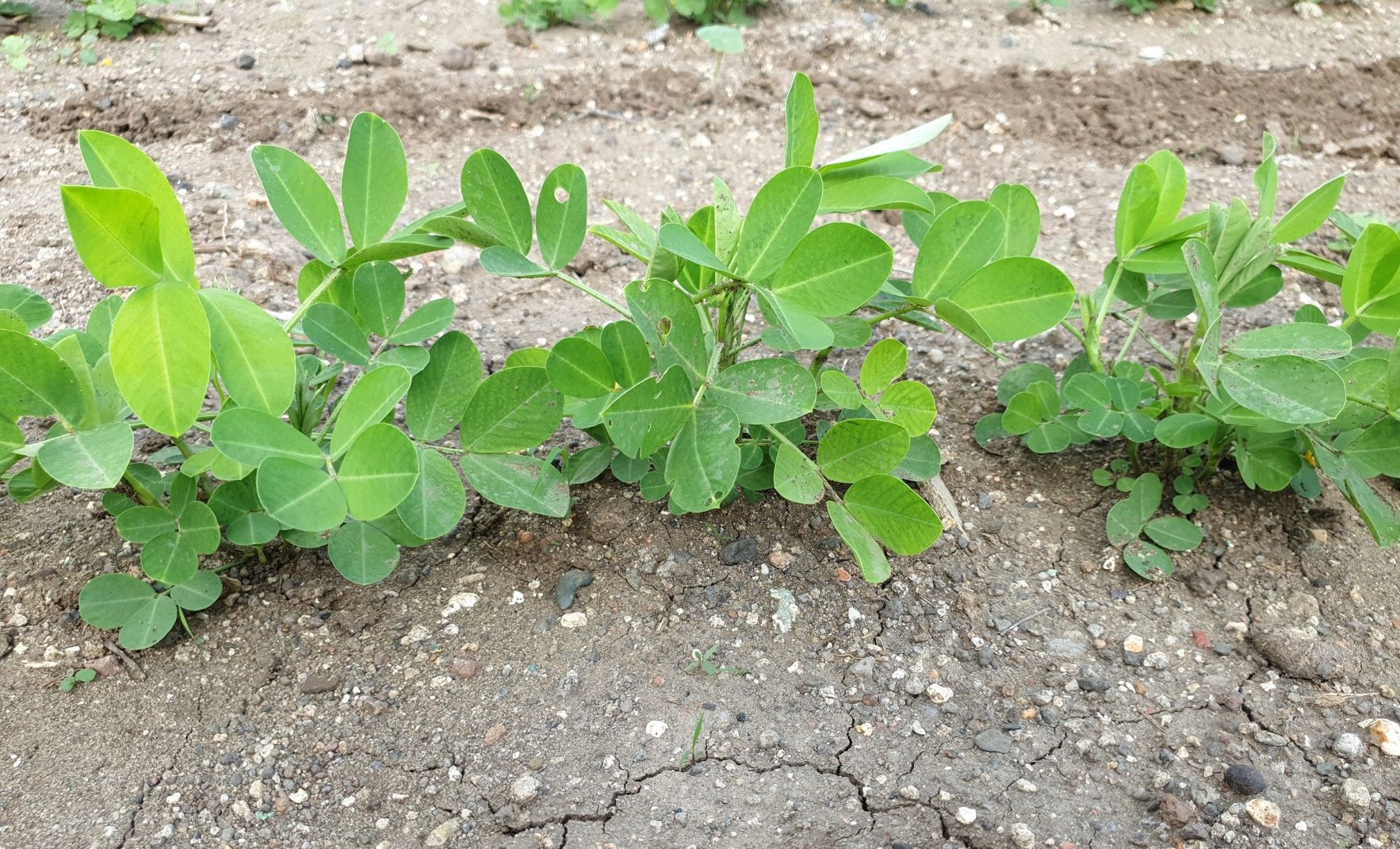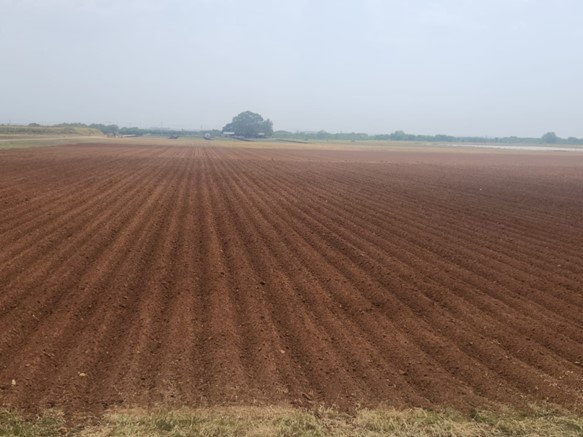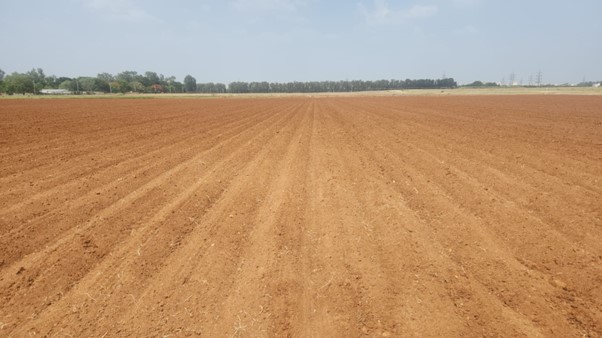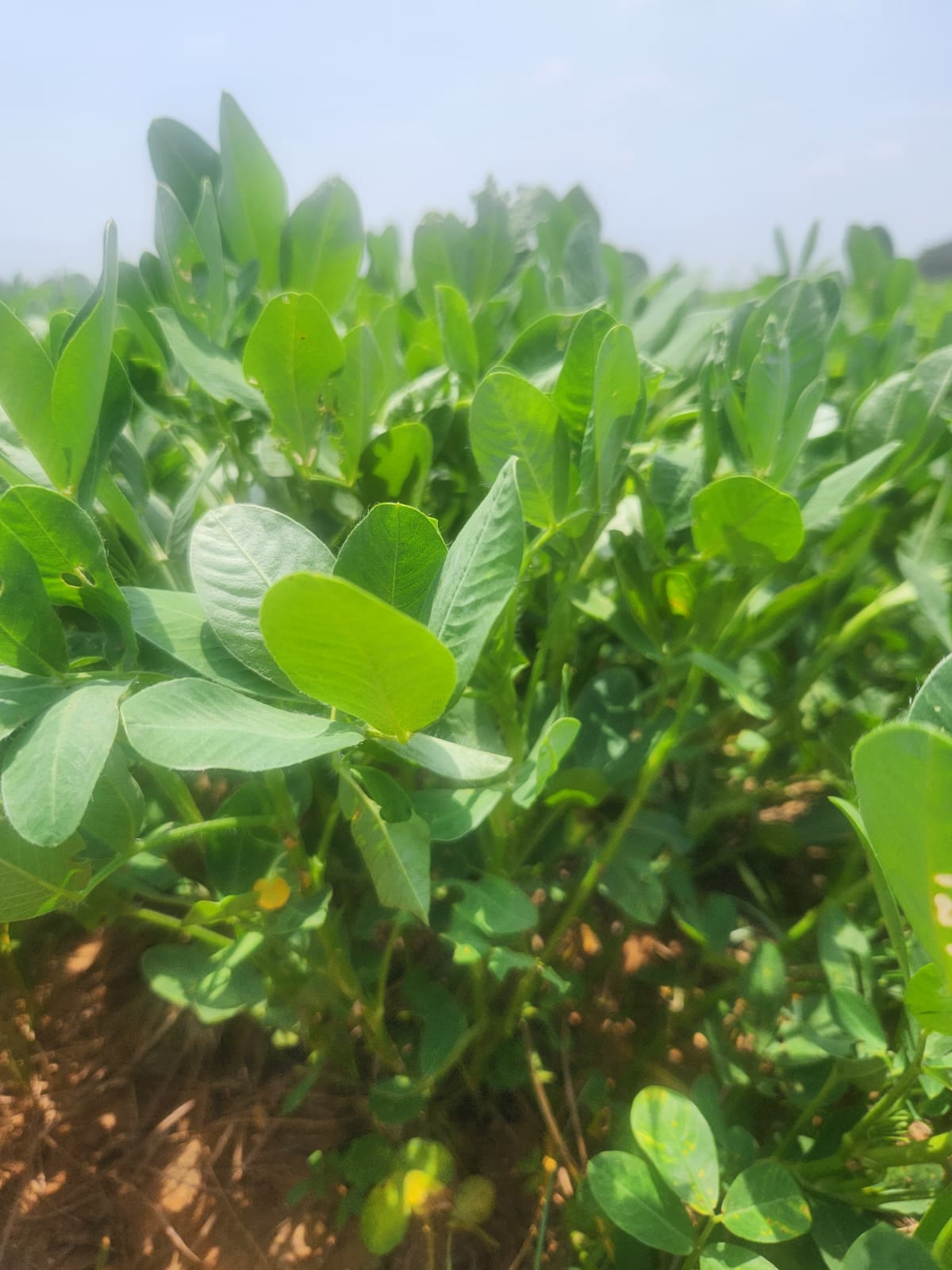Groundnut Soil requirement, Soil preparation and Planting

This post is also available in:
This post is also available in:
![]() हिन्दी (Hindi)
हिन्दी (Hindi)
Generally, groundnut is grown during Kharif (Rainy) season and in Rabi (Postrainy) in the availability of irrigation. Groundnut kernels contain 26% protein and 46-50% of oil, and many other beneficial components for humans, livestock, and the soil. Groundnut is a legume crop that can fix the atmospheric nitrogen in the ground, and thick foliage enriches the soil and prevents soil erosion.
Groundnut is a widely cultivated crop with specific soil requirements for optimal growth and yield.
Soil Requirements and Soil Preparation for Groundnut Cultivation
Soil requirements for groundnut
Groundnut thrives well in well-drained, loose, and sandy loam soils. Sandy loam soils are considered ideal because they provide good aeration and drainage while retaining sufficient moisture. The recommended pH range for groundnut cultivation is between 5.5 and 7.0. Maintaining the soil pH within this range is essential to ensure proper nutrient availability for the crop. Groundnut performs well in soils rich in organic matter. Adding organic matter, such as farmyard manure or compost, into the ground helps improve its fertility, moisture retention, and overall soil structure.
As mentioned earlier, sandy loam soils are preferred for groundnut cultivation. These soils allow for good root penetration, essential for developing groundnut plants and forming healthy pods. Proper soil drainage is crucial for groundnut cultivation. Poorly drained soils can lead to waterlogging, adversely affecting the crop’s growth and increasing the risk of diseases. Ensuring adequate soil drainage or implementing measures like raised beds can help prevent waterlogging.
Soil Preparation for groundnut planting
Preparing the soil properly is essential for success and high yields. Here are some details to follow for soil preparation. As mentioned, conduct a soil test to determine the soil’s pH level, nutrient content, and composition. This will help understand the soil’s fertility and identify any deficiencies or imbalances that need addressing. Clear the land of any weeds, rocks, or debris that may hinder groundnut cultivation. Remove any large vegetation or obstacles that could interfere with planting or harvesting.
Plow the field to break up the soil and turn it over. Plowing helps to loosen the soil, improve aeration, and facilitate root penetration. Aim for a depth of around 15 to 20 centimeters (6 to 8 inches and beyond this depth is not recommended) to ensure good seedbed or ridge and furrow preparation. After plowing, level the field to create a smooth and even surface. This facilitates irrigation and prevents water stagnation. It also helps in uniform planting and harvesting operations.
Based on the soil test results, we need to add soil amendments to improve the soil’s fertility. Common amendments include organic matter such as compost or well-rotted manure to enhance soil structure and nutrient content. Groundnut typically benefits from balanced fertilization, with an emphasis on phosphorus (P) and potassium (K). Lime or sulfur may be required to adjust the pH level if it is too acidic or alkaline. Apply fertilizers based on the nutrient requirements determined by the soil test. Groundnuts generally benefit from a balanced fertilizer with a higher phosphorus content (e.g., NPK 10-26-26). Incorporate the fertilizer into the soil during the final plowing or apply it as a top dressing before planting.
While groundnut requires a consistent moisture supply, especially during critical growth stages like flowering and pod development, it is sensitive to waterlogging. Groundnuts are often cultivated on raised beds or ridges and furrow systems to improve drainage and prevent waterlogging. Create raised beds by shaping and compacting the soil into ridges or mounds. The bed width should be around 90-120 centimeters (36-48 inches) and the height 10-15 centimeters (4-6 inches). Applying a layer of organic mulch, such as straw or crop residues, around the groundnut plants can help conserve soil moisture, suppress weed growth, and moderate soil temperature. This step is particularly beneficial in drier regions. Ensure proper irrigation facilities are in place to provide consistent and adequate moisture to the groundnut crop.


P.S.: Mr. Satyanarayana Mogilicherla, Senior officer agriculture, (A) RP 07C and (B) RP 05C fields of ICRISAT-Patancheru, Hyderabad-Telangana, India.
Planting density – Plant distances of groundnut
Groundnut spacing and seed rate
The seed rate requirement for groundnut cultivation can vary depending on several factors, such as:
- the variety of groundnut,
- the soil type,
- the sowing method, and
- the desired plant population per unit area
However, as a general guideline, the recommended seed rate of 100- 110 kg/ha with a spacing of 30 cm inter-spacing and 10 cm intra-spacing should be followed for bunch-type varieties. 95-100 kg/ha seed for spreading and semi-spreading varieties with a 45′ 10 cm spacing. The seed rate should be increased for the bold-seeded varieties.

Concluding remarks
Following these soil preparation steps can create favorable conditions for groundnut cultivation, promoting healthy plant growth and maximizing yield potential. It’s important to adapt these guidelines to suit the specific requirements of your location and groundnut variety. It’s important to note that local conditions and regional variations can influence specific soil requirements for groundnut cultivation. Consulting local agricultural extension services can provide valuable insights and recommendations tailored to your specific location.
Further reading
Groundnut: Plant Information, History, Uses and Nutrition Value
Principles of selecting the best varieties of Groundnut: A Comprehensive Guide
Groundnut Soil requirement, Soil preparation and Planting
Weed Management in Groundnut Farming
Fertilizer requirement for Groundnut Cultivation
Irrigation Requirement and Methods for Groundnut Cultivation
Groundnut Diseases and Management Practices









































































